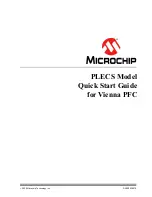
71
Connect the USB cable to the USB Blaster connector on the DE1_SoC board and host PC.
Power on the DE1_SoC board.
Execute the demo batch file “ DE1_SoC_SDRAM_RTL_Test.bat” under the batch file folder,
DE1_SoC_SDRAM_RTL_Test \demo_batch.
Press
KEY0
on the DE1_SoC board to start the verification process. When
KEY0
is pressed,
the
LEDs
(
LEDR
[2:0]) should turn on. At the instant of releasing
KEY0
,
LEDR1, LEDR2
should start blinking. After approximately 8 seconds,
LEDR1
should stop blinking and stay on
to indicate that the SDRAM has passed the test, respectively.
Table 5-3
lists the
LED
indicators.
If
LEDR2
is not blinking, it means 50MHz clock source is not working.
If
LEDR1
fail to remain on after 8 seconds, the corresponding SDRAM test has failed.
Press
KEY0
again to regenerate the test control signals for a repeat test.
Table 5-3 LED Indicators
Table
5-4NAME
Description
LEDR0
Reset
LEDR1
If light, SDRAM test pass
LEDR2
Blinks
5
5
.
.
6
6
T
T
V
V
B
B
o
o
x
x
D
D
e
e
m
m
o
o
n
n
s
s
t
t
r
r
a
a
t
t
i
i
o
o
n
n
This demonstration plays video and audio input from a DVD player using the VGA output, audio
CODEC, and one TV decoder on the DE1-SoC board.
Figure 5-9
shows the block diagram of the
design. There are two major blocks in the circuit, called I2C_AV_Config and TV_to_VGA. The
TV_to_VGA block consists of the ITU-R 656 Decoder, SDRAM Frame Buffer, YUV422 to
YUV444, YCbCr to RGB, and VGA Controller. The figure also shows the TV Decoder (ADV7180)
and the VGA DAC (ADV7123) chips used.
As soon as the bit stream is downloaded into the FPGA, the register values of the TV Decoder chip
are used to configure the TV decoder via the I2C_AV_Config block, which uses the I2C protocol to
communicate with the TV Decoder chip. Following the power-on sequence, the TV Decoder chip
will be unstable for a time period; the Lock Detector is responsible for detecting this instability.
The ITU-R 656 Decoder block extracts YcrCb 4:2:2 (YUV 4:2:2) video signals from the ITU-R 656
data stream sent from the TV Decoder. It also generates a data valid control signal indicating the
valid period of data output. Because the video signal from the TV Decoder is interlaced, we need to
perform de-interlacing on the data source. We used the SDRAM Frame Buffer and a field selection















































